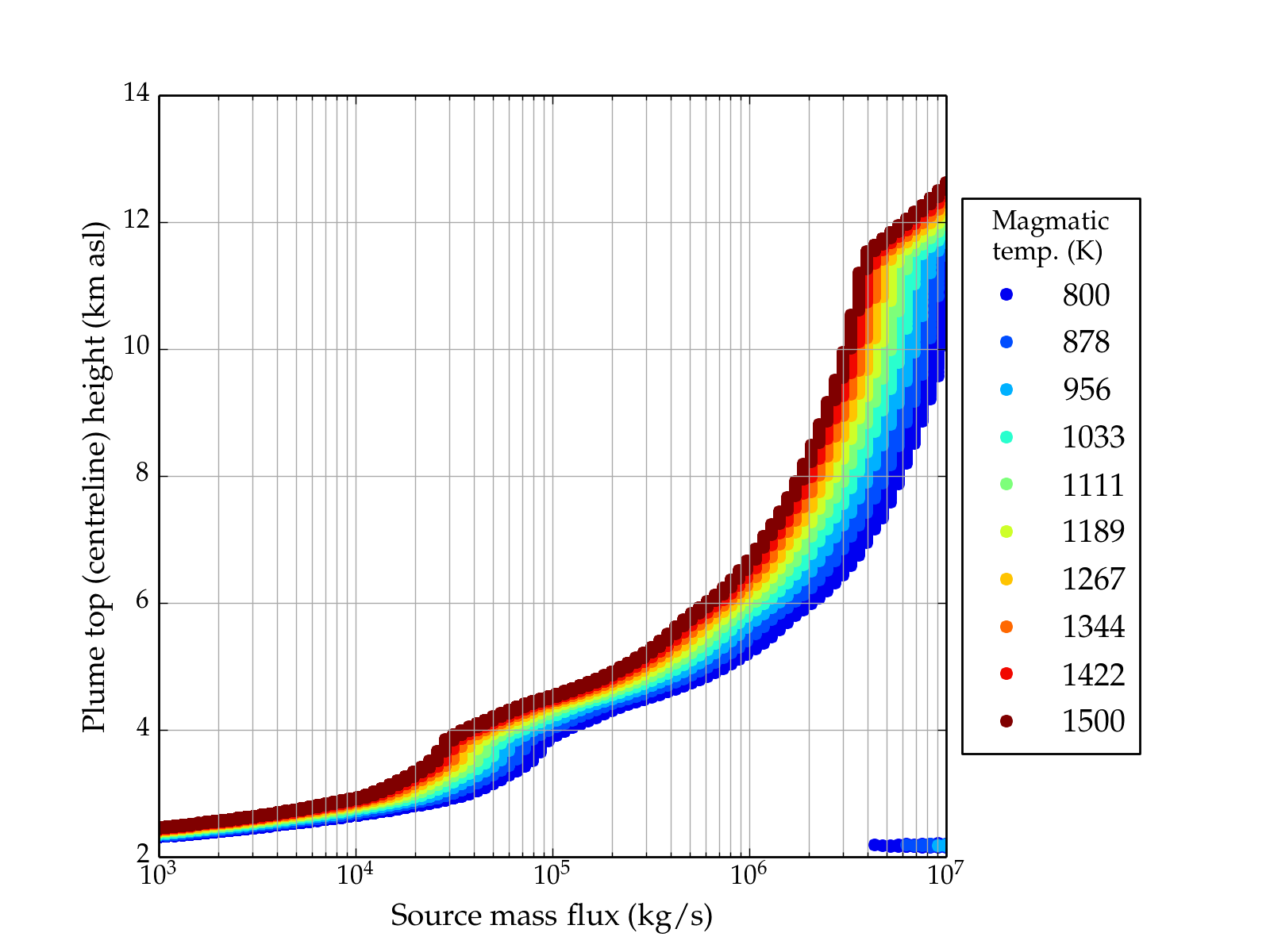To make reliable estimates of the source mass flux from plume height measurements, we ideally need good observations of the plume and good meteorological measurements; in the early stages of an eruption it is unlikely that these will be available immediately.
Using the PlumeRise model of volcanic plume dynamics, we can assess the effect of the atmospheric conditions on plume height using representative atmospheric conditions. Using the archive of global radiosonde measurements, we can produce curves of the plume height as a function of source mass flux that will allow a first estimate of mass eruption rate to be made. An example is shown below.

Here the prediction of the height of the plume is shown as a function of the source mass flux, but the results are generated by varying other source parameters (the magmatic temperature, exit velocity and volatile content). A total of 100000 combinations of source parameters are propagated through the model to assess the uncertainty due to these parameters. Typically the magmatic temperature has the strongest influence, and this is shown in colours on the plot.
In this example, the volcanic vent is at 2 km above sea level. For a source mass flux less than 104 kg/s the plume is not predicted to rise significantly above the vent. For a source mass flux of 105 kg/s the model predicts a plume rising to between 3.5 and 4 km, depending (primarily) on the magmatic temperature. Increasing the source mass flux further results in an increasing in the predicted height of the plume, although there is an increase in the uncertainty due to the dependence on other source parameters, particularly the magmatic temperature.
For a plume rising to 4 km asl, the model predicts a source mass flux in the range from 8×104 kg/s (for high magmatic temperature) to 4×105 kg/s (for low magmatic temperature) is required.
Note that at high eruption rates (source mass flux in excess of 4×106) the model suggests that there is the possibity of column collapse.